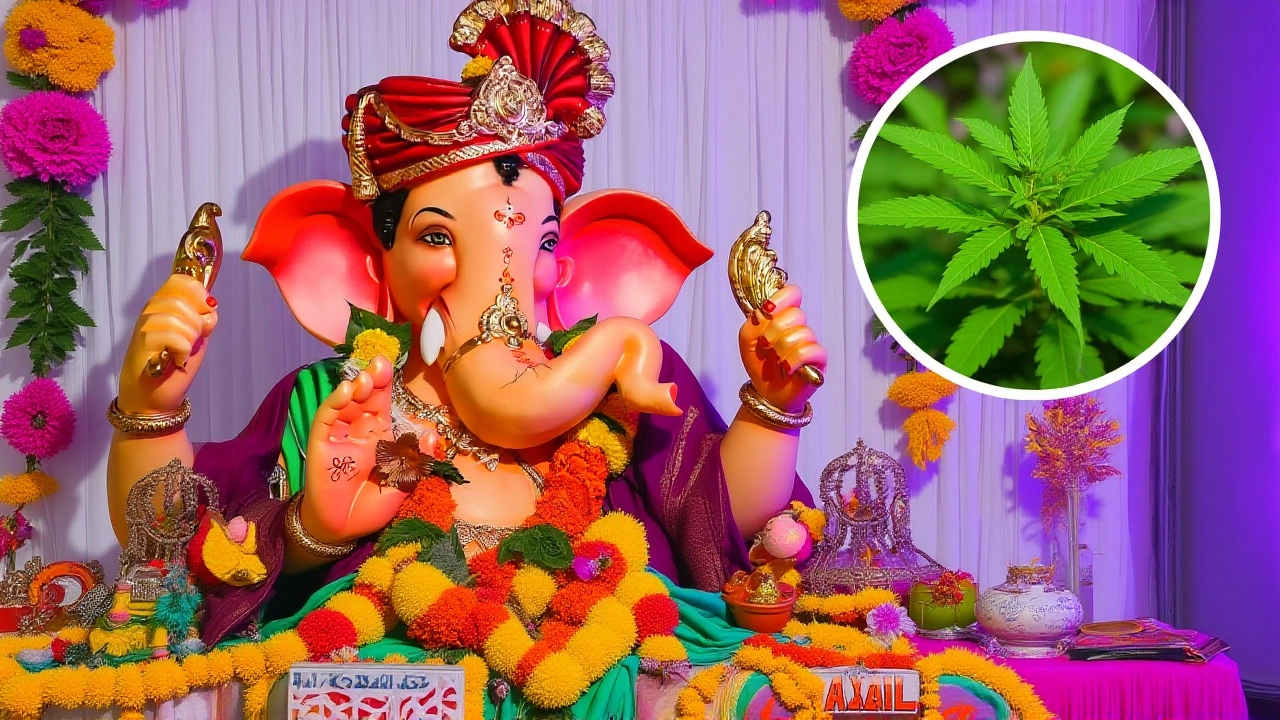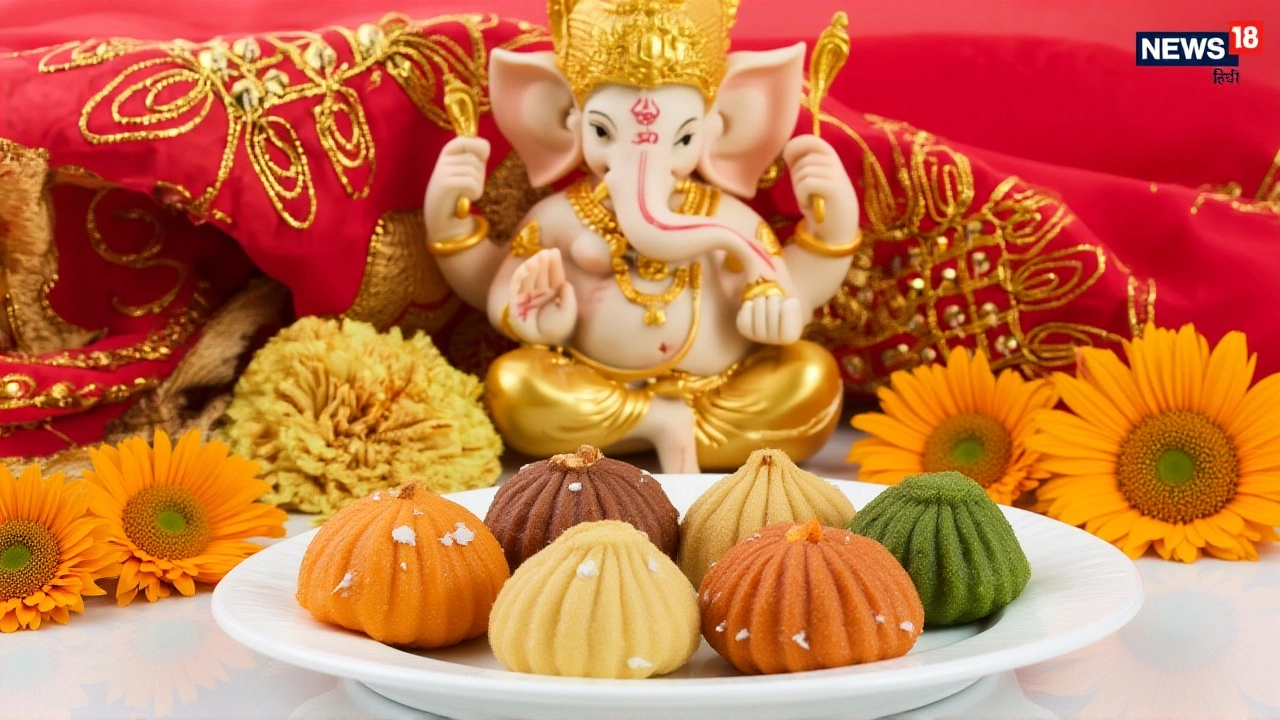When Lord Ganesh — the elephant‑headed remover of obstacles — is invoked on the same day that women across India fast for their husbands, the spiritual stakes feel unusually high. On August 22, 2023, a rare confluence of festivals — Kajari Teej, Sankashti Chaturthi, Bahula Chauth and Satudi Teej — filled the calendar, and every devotee was told to listen to or read Ganesh Ji Ki Katha to secure the promised blessings.
Those festivals aren’t just cultural footnotes; they’re living rituals that shape daily life for millions. Kajari Teej, observed by married women for their husband's longevity, falls in Bhadrapad, while Sankashti Chaturthi, celebrated on the fourth day of the waning moon in the Magh month, is believed to grant wishes when the fast is completed. The twist is that tradition ties both observances to the same devotional practice: recounting the Lord’s stories.
Why the Story Matters on These Fast Days
According to a Times Now Hindi report dated August 22, 2023, reciting Ganesh’s tale on these auspicious days “ensures complete spiritual benefits of the puja.” The reasoning is simple yet profound: the narrative itself embodies the removal of obstacles, a core promise of Ganesh. Live Hindustan’s coverage on October 10, 2023 adds that the fast is considered truly fulfilled only after the story is heard or read.
India TV echoed the sentiment in an October 10, 2025 segment on Karwa Chauth, stating that “गणेश जी की कथा हर व्रत‑त्योहार में जरूर पढ़नी चाहिए क्योंकि इससे पूजा का संपूर्ण फल प्राप्त हो जाता है.” In other words, the story acts like a spiritual seal, locking in the blessings promised by the deities.
Three Popular Versions of Ganesh Ji Ki Katha
While the core message stays the same, the storytelling tradition offers several flavors. Below are the three most cited renditions, each highlighting a different moral lesson.
1. The Clay Idol and the Stubborn Wall
Times Now Hindi recounts a tale of an elderly woman who fashioned a clay Ganesh idol daily. When a construction crew began building a wealthy merchant’s house nearby, she asked the mason to carve a stone Ganesh for her. The mason refused, saying the stone would cost more than his own wall. The woman responded, “भगवान करे तुम्हारी दीवार टेढ़ी हो जाए.” Instantly, the wall wavered, and she secured her stone deity.
2. The Blind Woman Who Chose Sight Over Wealth
India TV’s October 2025 feature tells of a blind old lady with a son and daughter‑in‑law living in poverty. After years of devotion, Ganesh appeared and offered to grant her any wish. She hesitated, asking what she could possibly want. The Lord urged her to ask her family first. Her son asked for money; her daughter‑in‑law wanted a grandson. The woman, seeing their self‑interest, turned to her neighbors, who advised her to ask for eyesight — the one thing that would truly make her remaining days peaceful. The deity granted her the gift, and with clear vision she lived out her days in contentment.
3. The Twelve Grain Incident
In a popular YouTube narrative (video ID RVidS‑N5wbI), Ganesh, traveling in a chariot, spots a thriving field. Overcome by hunger, he plucks twelve wheat grains. Realising his mistake, he approaches the landlord, offers to work twelve years to atone, and the landlord accepts. The story ends with Ganesh’s humility and the moral that even gods must respect dharma.
How the Festivals Are Observed Across India
On Kajari Teej, women wake before sunrise, take a ceremonial bath, and keep a fast that permits only milk, fruit, and occasionally a single grain of rice. They pray to the divine couple — Lord Shiva and Goddess Parvati — but also invoke Ganesh, believing his presence clears the path for their wishes.
Sankashti Chaturthi, meanwhile, follows a strict lunar calendar. The fast begins at sunrise and ends after sighting the moon on the fourth night of the Krishna Paksha. Devotees often break the fast after offering “modak” (sweet dumplings) to Ganesh. In the Magh month, the day is also called “Til Chauth,” because sesame seeds (til) are traditionally consumed as part of the ritual.
Both festivals see a surge in community gatherings, where a designated storyteller — sometimes a priest, sometimes an elder — recites Ganesh Ji Ki Katha. The recitation can stretch for an hour, interspersed with chants of “Om Gan Ganapataye Namah.” The collective listening is believed to amplify the fast’s potency.
Responses From Religious Leaders and Scholars
Dr. Vijay Mishra, a professor of Hindu studies at the University of Delhi, told India TV that “the practice of linking mythic narratives to fasting rituals is ancient. It creates a psychological anchor, reinforcing the devotee’s resolve.” He added that the story’s emphasis on humility resonates especially during Sankashti Chaturthi, a day already focused on overcoming personal obstacles.
Meanwhile, senior priest Shri Hari Prasad Shastri of the renowned Shri Ganesh Mandir in Varanasi noted that the three versions of the story are all valid; “Each family may choose the tale that speaks to their own struggles, be it material need, health, or moral integrity.”

Broader Cultural Impact
The synchronized observance of multiple festivals on a single day sparked a wave of media coverage. Times Now Hindi, Live Hindustan, and Bharat Discovery all ran special segments, driving a noticeable spike in online searches for “Ganesh Ji Ki Katha PDF” and “Sankashti Chaturthi vrat vidhi.” Local businesses reported higher sales of modak, sesame sweets, and devotional CDs.
Beyond commerce, the day reinforced community bonds. In villages across Uttar Pradesh, Rajasthan, and Madhya Pradesh, people gathered under banyan trees, sharing the story aloud while passing bowls of prasad. The collective experience underscores how myth and ritual continue to shape social cohesion in modern India.
What Comes Next? Future Observances and Digital Trends
With the rise of streaming platforms, many temples now broadcast live recitations of Ganesh Ji Ki Katha, allowing diaspora Hindus to participate from abroad. Experts predict that next year’s simultaneous festivals will see even more virtual engagement, perhaps with interactive Q&A sessions after the story.
Meanwhile, scholars are documenting oral variations of the tale, hoping to preserve regional nuances before they fade. The effort reflects a broader movement to archive intangible cultural heritage, ensuring that stories like Ganesh’s continue to guide future generations.
Key Takeaways
- August 22, 2023 marked the rare overlap of Kajari Teej, Sankashti Chaturthi, Bahula Chauth and Satudi Teej.
- All major Hindu media outlets stress that hearing or reading Ganesh Ji Ki Katha is essential for the fast’s efficacy.
- Three popular versions of the story emphasize humility, self‑lessness, and dharma.
- Community recitations strengthen social bonds and have spurred a digital surge in devotional content.
- Future festivals will likely blend traditional live gatherings with online streaming.
Frequently Asked Questions
Why is Ganesh Ji Ki Katha considered essential on Sankashti Chaturthi?
Sankashti Chaturthi is a vow to remove obstacles, and Ganesh is the traditional remover of obstacles. Reciting his story reinforces the fast’s purpose, aligns the devotee’s mindset with dharma, and, according to religious texts, guarantees that the promised wishes are fulfilled once the narrative is heard.
What differences exist between the three versions of Ganesh Ji Ki Katha?
The clay‑idol version stresses devotion despite material scarcity; the blind‑woman tale highlights inner vision over wealth; the twelve‑grain story underscores accountability even for a deity. Each version teaches a distinct moral but all converge on humility and the need to seek Ganesh’s grace.
How do modern devotees access Ganesh Ji Ki Katha during the fast?
Many temples now livestream the recitation on YouTube or Facebook. Printable PDFs are shared on devotional websites, and several mobile apps offer audio versions that can be played while observing the vrat.
What impact did the August 2023 simultaneous festivals have on local economies?
Vendors of modak, sesame sweets, and religious paraphernalia reported sales spikes of 30‑45 %. Additionally, streaming platforms noted a 60 % increase in viewership for live ganesh‑katha sessions, translating into higher ad revenue for devotional channels.
Will the tradition of reading Ganesh Ji Ki Katha continue for future festivals?
Experts say yes. The practice is deeply embedded in oral tradition, and with digital archiving initiatives, the story is becoming more accessible, ensuring that every future Kajari Teej and Sankashti Chaturthi will likely feature the katha as a central ritual.
